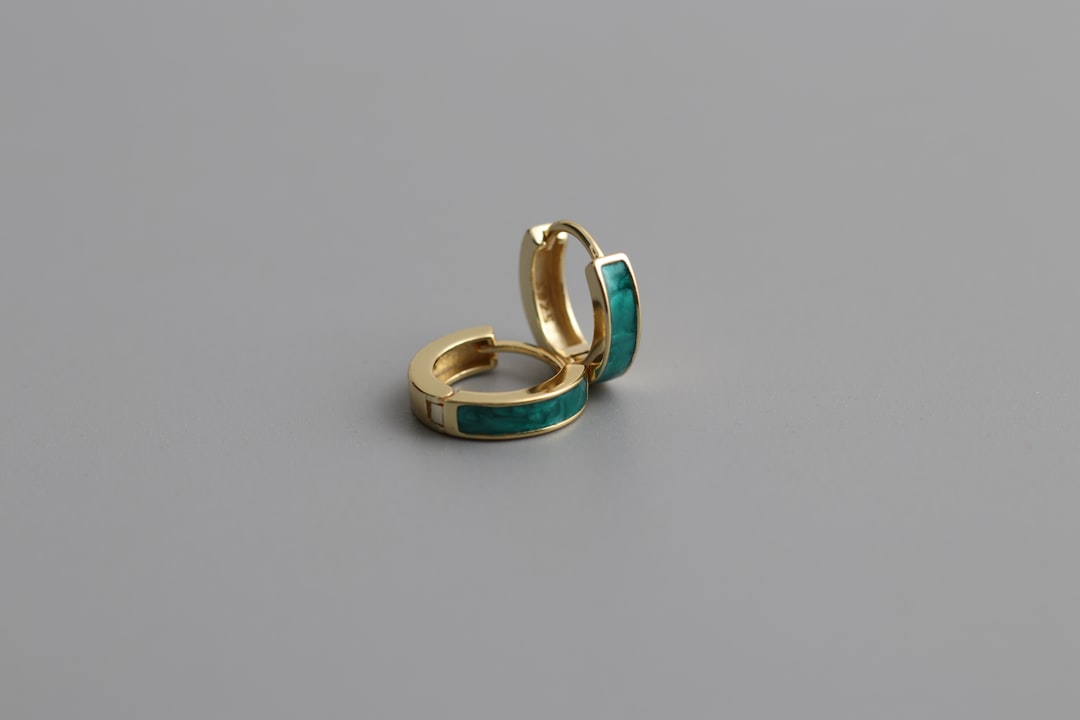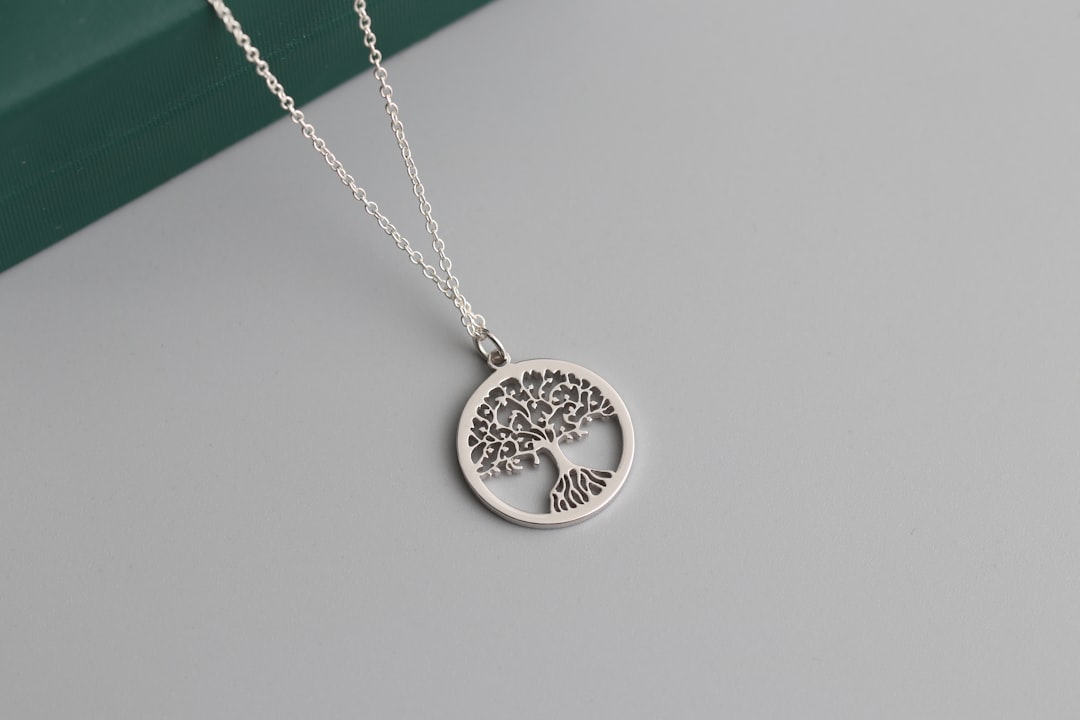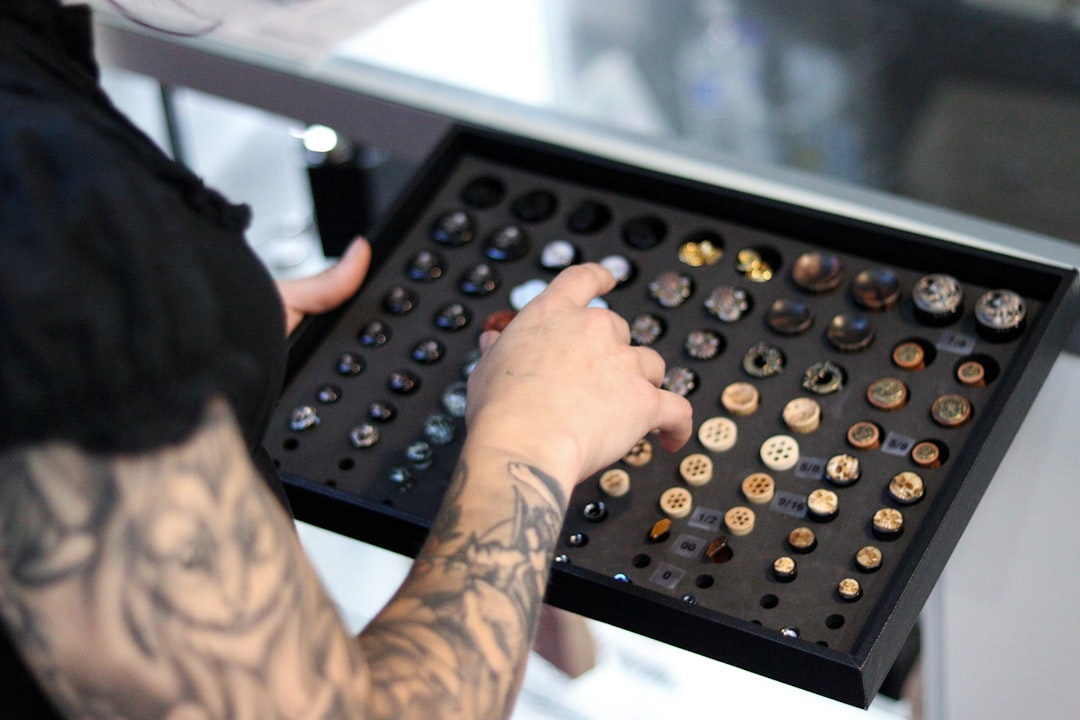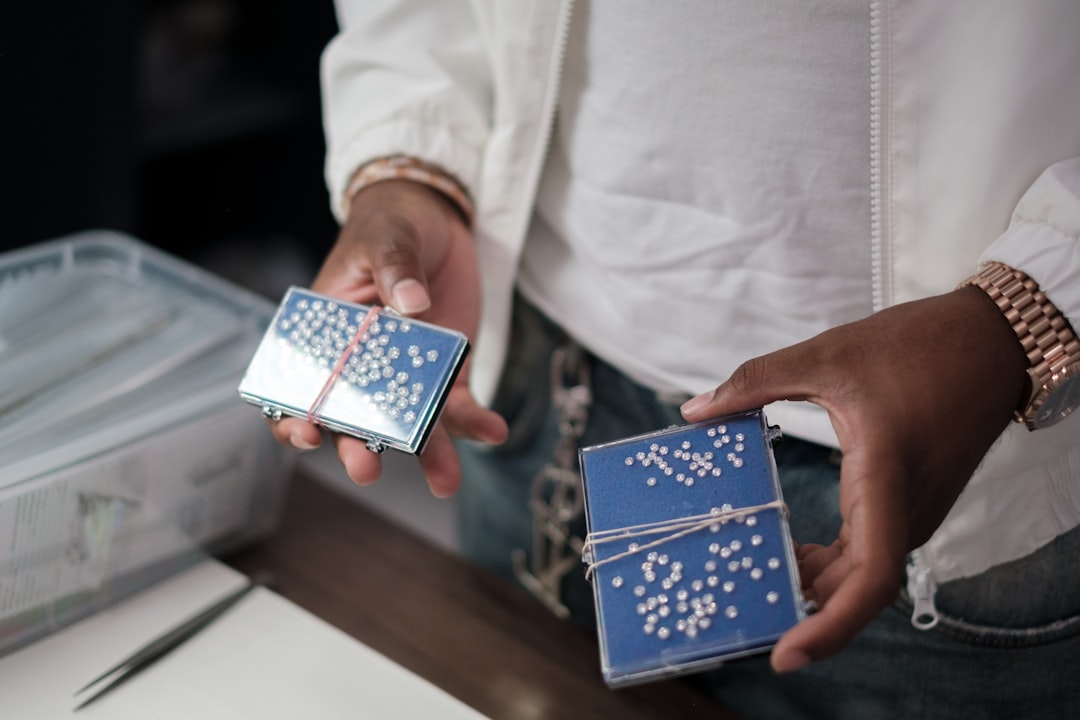

Engage prospects with a scan and streamline customer engagement with FREE QR code marketing tools by Sona – no strings attached!
Create a Free QR CodeFree consultation

No commitment

Engage prospects with a scan and streamline customer engagement with FREE QR code marketing tools by Sona – no strings attached!
Create a Free QR CodeFree consultation

No commitment
Jewelry stores face an ongoing challenge: how to turn fleeting in-store interest into lasting customer engagement and measurable sales. In a rapidly evolving retail environment, where high-value prospects might browse, ask questions, or compare options without leaving a visible trace, missed opportunities can go unnoticed, especially when interactions are not effectively tracked or attributed to future sales.
As digital transformation accelerates in the jewelry sector, tactics like printed brochures, static displays, and paper loyalty cards are no longer enough to meet the expectations of modern shoppers. Today’s consumers seek seamless, personalized experiences that bridge the tactile allure of in-store visits with the convenience of digital touchpoints.
QR codes have become a strategic bridge between these environments, giving jewelry retailers a powerful way to boost engagement, streamline operations, and gain valuable marketing insights. By using QR codes for authenticating luxury pieces, launching seasonal promotions, or connecting directly with high-value clients, jewelry businesses can drive instant action while capturing essential buyer signals at every stage.

For jewelry stores, one persistent challenge is that many high-intent visitors engage with displays or products but disappear before their interest is captured, resulting in lost leads and missed opportunities. A shopper might admire a diamond bracelet, ask a question, then leave without providing contact information. QR codes lower the barrier to participation by turning every interaction into an easy, trackable action that can be nurtured.
Traditional workflows, like relying on passive brochures or manual signup sheets, lag behind buyer behavior and often fail in high-traffic or event settings. QR codes bridge the gap between physical touchpoints and digital experiences, making it easier for stores to:
Replacing outdated processes is where QR really shines. Printed catalogs become dynamic collection pages that always reflect current inventory. Pen-and-paper appointment sheets become self-serve booking flows, and generic paper loyalty cards become digital rewards programs synced to customer profiles. Platforms like Sona QR support each of these steps with dynamic links, real-time analytics, and CRM integrations that transform passive traffic into measurable demand.
Strategic QR code implementation gives jewelry retailers granular visibility into intent, eliminates friction, and enables timely follow-up. The result is a smoother customer experience that moves shoppers from curiosity to conversion, supported by data you can act on.
Jewelry retailers frequently struggle with limited visibility into who is engaging in-store, especially when high-value prospects browse anonymously and delay purchase decisions. This lack of data means promising leads might never enter your CRM, which reduces the effectiveness of future outreach. QR codes address this pain by making every display, card, or package a digital gateway to actions that can be measured and nurtured.
The value goes beyond convenience. Jewelry purchases are highly considered and often involve multiple visits or comparisons. A scan at a showcase today, a care guide consultation tomorrow, and a financing calculator next week are the kind of intent signals that, when connected, paint a clear picture of readiness to buy. QR codes create that connective tissue and allow marketers to orchestrate relevant follow-ups.
For modern jewelry stores, QR codes provide the missing link between in-store engagement and measurable digital action. You gain a data-backed way to nurture relationships with relevance and precision.

Jewelers balance premium service expectations with operational efficiency. When customer data is incomplete or generic, personalization degrades and offers become less compelling. QR codes help by supporting formats tailored to common jewelry workflows, which keeps experiences elegant while ensuring quality data capture.
The key is to deploy formats that match your environment. Showroom floors, glossy surfaces, and variable lighting require scannable codes and clear calls to action. When paired with dynamic destinations, you can update content without reprinting and keep journeys aligned with new arrivals, seasonal campaigns, or exclusive events.
With Sona QR, you can generate and manage all of these formats from a single dashboard and apply dynamic URLs, UTM parameters, and creative frames that fit your brand.
Growth in jewelry retail often hides in touchpoints that do not get tracked: shoppers who visit after hours, recipients of gift packaging, and attendees at trunk shows or wedding expos. QR codes turn these quiet moments into measurable journeys that surface intent, enable timely follow-up, and create opportunities for cross-sell or upsell.
When QR codes tag interactions across placements, you can learn which display cases get the most interest, which promotions resonate, and which customer segments respond to various incentives. That insight helps your team prioritize investment and shape creative that meets shoppers where they are in the journey.
By tagging and tracking these micro-moments, jewelers can proactively identify upsell opportunities, anticipate churn risks based on engagement drop-offs, and reach out with tailored content at the right time.

Many jewelry stores seek to validate purchases, streamline appointment setting, and personalize rewards without adding friction for staff or customers. QR codes simplify and automate these critical interactions while keeping the brand experience premium.
Start with use cases that map to your most common customer interactions and revenue levers. Then expand to layered journeys that collect first-party data, drive loyalty, and improve lifetime value.
Each use case makes formerly manual processes faster and more reliable. They also ensure important buyer interactions are measured, credited, and acted on in real time.
Retailers often overlook prospects who show strong interest but leave no contact trail. A shopper might compare settings or inquire about financing yet avoid immediate signup. QR codes let you capture these moments and transform them into segmented audiences for efficient retargeting across email, SMS, and paid media.
By deploying unique codes at different touchpoints and funnel stages, you can infer intent and readiness, then tailor follow-ups accordingly. See Sona’s intent data guide for tips on turning signals into revenue.
These strategies close the gap between in-store intrigue and digital outreach. High-value prospects do not slip through cracks because critical intent signals are captured and acted upon right away.
Disconnected channels make it difficult to attribute results or coordinate follow-ups. QR codes unify physical and digital campaigns by providing live entry points to measurable actions, no matter the medium. In jewelry retail, where conversions may span several weeks or visits, this connected fabric is essential. For measurement, see Sona’s offline attribution guide.
Imagine a prospect who scans a window display on Saturday, views a care guide at home on Sunday, and books a consultation on Monday. With dynamic QR codes and integrated analytics, you can identify that path, personalize the outreach, and allocate budget toward the placements that initiated or accelerated the journey.
With a centralized platform like Sona QR, you can manage code creation, monitor performance, and sync scan data with your CRM and ad platforms. This connected approach turns QR codes into the offline onramp for your entire marketing engine.
A frequent frustration for marketing managers is unclear attribution. It is easy to deploy a QR code, but harder to know which executions generate real results. Use the following process to enforce best practices and illuminate what works so you can scale with confidence.
Design each step with your high-value outcomes in mind. Bridal consultations, authentication verification, or loyalty enrollments should be measurable, quickly actionable, and clearly tied to code placement and creative.
Start with a single, high-impact objective. Examples include event RSVP at a bridal expo, appointment booking from a window display, or product authentication from a certificate insert. Describe the desired user action, the success metric, and the stakeholders.
Clarify business outcomes and measurement before creative work begins. For instance, target a 25 percent increase in appointment bookings from expo traffic or a 40 percent scan-to-enrollment rate on a loyalty push. Document how the scan event will hand off to CRM or performance tools through Sona QR.
Choose the code type based on your need for flexibility and analytics. Static QR codes suit fixed destinations like a PDF brochure that will not change for months. Dynamic QR codes are better when you want to track scans, adjust destinations, or A/B test offers without reprinting.
When in doubt, choose dynamic. It provides richer analytics, easier iteration, and the ability to pivot mid-campaign. Sona QR supports dynamic redirects, UTM parameters, and per-placement tracking so you can refine without added print costs.
Design for clarity, brand fit, and scannability. Add your logo or brand colors, use a generous quiet zone, and place a clear frame with a specific call to action such as Scan to book your consultation or Scan to verify authenticity.
Field test before deploying. Jewelry environments often include reflective materials, glass, and variable lighting, which can impede scans. Test across phones, angles, and distances, including through glass and in low light. Confirm load speed, page rendering, and mobile form usability.
Place codes where they make contextual sense and match the user’s stage. In-store table tents or case tags should prompt immediate actions like viewing specs or joining a waitlist. Packaging inserts should encourage care guide access or loyalty enrollment. Event collateral should drive RSVPs, check-ins, or consultation booking.
Diversify placements with intent in mind. Use window signage to capture after-hours leads, direct mail to announce trunk shows, and receipts to push warranty registration. Track each placement separately in Sona QR to compare performance across media and locations.
Use granular analytics to monitor performance. Track scans by time, location, device, and creative variant. Measure conversion rates from scan to form submit, appointment, or purchase. Identify drop-off points and optimize landing pages, CTAs, or offers accordingly.
Adopt a test-and-learn cadence. A/B test QR design frames, call-to-action copy, and landing page layouts. Iterate based on weekly data and seasonality. Share wins and learnings across teams so that future campaigns benefit from proven patterns.

Too often, teams stop at scan counts, which hides the path from attention to purchase. Without tying scans to appointments, store visits, and sales, you are left guessing which efforts deserve more budget. Modern platforms close this loop by linking each scan to downstream behaviors and revenue outcomes.
Sona QR and Sona.com work together to move from raw engagement to performance insights. Sona is an AI-powered marketing platform that turns first-party data into revenue through automated attribution, data activation, and workflow orchestration. Sona QR captures the who, where, and when of scans, while Sona.com connects those touchpoints to CRM identities, buyer journeys, and revenue attribution so you can see which codes truly drive pipeline and closed sales.
When analytics guide decision-making, you can reallocate investment toward the highest-impact placements and refine offers to align with demonstrated interest. Over time, this leads to higher conversion rates, improved loyalty participation, and better marketing efficiency.
To avoid missing high-value prospects or failing to capture post-sale opportunities, focus on a handful of practices that reliably increase scan rates and downstream conversions. The goal is to make every scan immediately valuable for the shopper and instantly actionable for your team.
Lean into the media that already works in jewelry stores. Showcase tags, high-end packaging, window signage, and event collateral are fertile ground for QR-led journeys. Pair them with crystal-clear CTAs and quick-loading, mobile-first destinations, or use a template bundle to speed up production.
Creative deployment examples for jewelry stores include QR codes on ring sizers for at-home try kits that link to virtual consultations, and QR codes on appraisal or insurance paperwork that prompt warranty registration and loyalty enrollment in one flow.

Attribution is particularly challenging in high-ticket environments. QR codes are helping jewelry retailers connect the dots between attention and action, while raising the overall customer experience.
Consider how these strategies blend trust-building and performance marketing. Authentication reduces risk and invites customers to explore more, while appointment flows capture hot interest and trigger tailored outreach. Limited drops tie demand to trackable digital storefronts, creating urgency and clear attribution.
These examples show that QR codes can elevate both the luxury feel and the measurability of campaigns. The most effective executions combine elegant design, clear value, and rigorous analytics.
Without an intentional approach, QR deployments can underperform due to weak placement, generic destinations, or poor follow-through. Attention to detail determines whether codes become a growth engine or a missed opportunity.
Test with real shoppers and real lighting. Small changes to placement height, code size, or CTA clarity can make the difference between occasional scans and consistent engagement. Ensure that page loads are fast on mobile and that forms require minimal input.
Ignoring these details often results in leads not being imported, insufficient follow-up, and underwhelming ROI. In a category where each opportunity can be significant, the difference between good and great execution compounds quickly.
QR codes are transforming jewelry stores by merging the tactile impact of in-store shopping with the scalability and measurability of digital marketing. From instant product authentication to seamless loyalty enrollment and ROI-driven campaign analysis, QR codes let jewelers address the pain of lost leads and anonymous engagement by capturing every critical buying signal and supporting personalized outreach at scale.
Jewelry retailers who embrace QR-driven strategies gain actionable insights, a connected omnichannel experience, and smarter customer journeys, from luxury showcases to direct mail to digital remarketing. The future of jewelry marketing is interactive, measurable, and deeply customer-centric, with QR codes acting as both the on-ramp and the engine for lasting, data-informed growth.
For stores ready to close attribution gaps and turn every scan into a measurable business outcome, start by piloting one or two high-intent use cases, such as authentication and appointment booking. Evaluate best-in-class platforms like Sona QR for dynamic code management and analytics, then connect to Sona.com for identity resolution and multi-touch attribution. In a competitive market where each interaction matters, this approach provides the clarity and control needed to scale what works and deliver exceptional customer experiences. Start creating QR codes for free.
QR codes have transformed jewelry stores from simple point-of-sale locations into interactive, data-driven engagement hubs. Whether it’s attracting new customers, enriching the in-store experience, or showcasing exclusive collections, QR codes replace traditional static displays with instant, mobile-friendly interactions that capture valuable insights and drive sales. Imagine knowing exactly which designs captivate your audience and which promotions convert browsers into buyers—all in real time.
With Sona QR, you can effortlessly create dynamic, trackable QR codes that update instantly without the need for costly reprints. Connect every scan to meaningful customer actions, optimize your marketing strategies on the fly, and turn foot traffic into loyal clientele. Start for free with Sona QR today and transform every scan into a sparkling opportunity for growth.
QR codes create seamless offline-to-online journeys that lower barriers to engagement, enable instant access to product details, appointment bookings, and loyalty programs, resulting in a smoother and more personalized shopping experience.
QR codes enhance engagement by capturing real-time customer interactions, provide dynamic content flexibility, enable timely follow-ups, offer robust attribution of marketing efforts, and turn passive browsing into measurable digital actions.
QR codes capture detailed scan data such as time, location, device, and campaign source, which integrates with CRM and marketing platforms to create segmented audiences, track conversions, and attribute sales to specific touchpoints.
Jewelry stores can place QR codes on product authentication certificates, packaging inserts for care guides and loyalty enrollment, ring sizers for virtual try-ons, appraisal paperwork for warranty registration, and event materials for appointment scheduling.
By deploying QR codes across in-store displays, packaging, events, and direct mail, stores can capture high-intent leads, automate follow-ups, personalize offers, measure campaign effectiveness, and create interactive experiences that increase conversion rates and customer loyalty.
Use Sona QR's trackable codes to improve customer acquisition and engagement today.
Create Your FREE Trackable QR Code in SecondsJoin results-focused teams combining Sona Platform automation with advanced Google Ads strategies to scale lead generation

Connect your existing CRM

Free Account Enrichment

No setup fees
No commitment required

Free consultation

Get a custom Google Ads roadmap for your business






Launch campaigns that generate qualified leads in 30 days or less.
